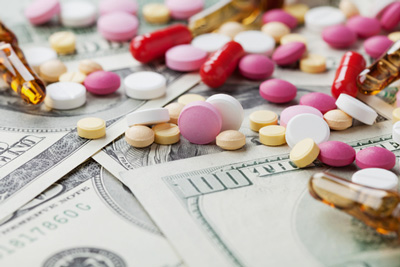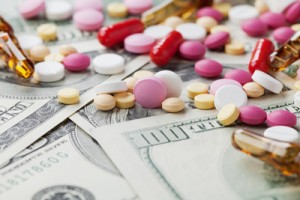Researchers say Orphan Drug loophole needs to be addressed
Posted: 20 November 2015 |
Health experts are calling on lawmakers to close loopholes in the Orphan Drug Act that, they claim, give drug companies millions of dollars in unintended and misplaced subsidies and tax breaks…


Researchers at Johns Hopkins Medicine are calling on lawmakers and regulators to close loopholes in the Orphan Drug Act that, they claim, give drug companies millions of dollars in unintended and misplaced subsidies and tax breaks.


In a commentary that appears in the American Journal of Clinical Oncology, the authors argue that pharmaceutical companies are exploiting gaps in the law by claiming “orphan” status – a designation meant to encourage the development of drugs for rare diseases that affect fewer than 200,000 people in the US. Yet many of these drugs, the authors say, end up being marketed for other, more common conditions, generating billions in profits.
“The industry has been gaming the system by slicing and dicing indications so that drugs qualify for lucrative orphan status benefits,” says author Martin Makary, M.D., M.P.H., professor of surgery at Johns Hopkins and a prominent health-care quality and safety expert. “As a result, funding support intended for rare disease medicine is diverted to fund the development of blockbuster drugs.”
The 1983 act was designed to encourage drug companies to develop treatments for orphan diseases that would be unprofitable because of the limited market. The authors point out that legislation has accomplished that mission and sparked the development of lifesaving therapies for a constellation of rare disorders, including cystic fibrosis, muscular dystrophies and certain paediatric cancers.
However, the authors say, the law has also invited abuse. Under the terms of the act, companies can receive federal taxpayer subsidies of up to half a million dollars a year for up to four years per drug, large tax credits and waivers of marketing application fees that can cost more than $2 million. In addition, the Food and Drug Administration (FDA) can grant companies seven years of marketing exclusivity for an orphan drug to ensure they recoup the costs of research and development.
Companies initially list only a single indication for an orphan disease
Makary says companies exploit the law by initially listing only a single indication for a drug’s use — one narrow enough to qualify for “orphan” disease benefits. After FDA approval, however, some such drugs are marketed and used off label far more broadly, thus turning large profits.
“This is a financially toxic practice that is also unethical. It’s time to ensure that we also render it illegal,” says study co-author Michael Daniel, a research fellow in the Department of Surgery at Johns Hopkins. “The practice inflates drug prices and the costs are passed on to consumers in the form of higher health insurance premiums.”
The authors refer to the drug rituximab which was originally approved to treat follicular B-cell non-Hodgkin’s lymphoma, a disease that affects about 14,000 patients a year. The drug, however, is now also used to treat several other types of cancer, organ rejection following kidney transplantation and autoimmune diseases, including rheumatoid arthritis which affects 1.3 million Americans. Rituximab, marketed under several trade names, is the number-one selling medication approved as an orphan drug, the 12th all-time drug best seller in the United States and generated $3.7 billion in domestic sales in 2014.
Orphan drugs expected to account for 19% of global prescription drug sales by 2020
Of the 41 drugs approved by the FDA in 2014, 18 had orphan status designations, the researchers say, forecasting that in 2015, orphan drugs will generate sales totaling $107 billion. That number, they add, is expected to reach $176 billion by 2020. The projection, Makary says, represents a yearly growth rate of nearly 11%, or double the growth rate of the overall prescription drug market. The authors also cite data showing that by 2020, orphan drugs are expected to account for 19% of global prescription drug sales, up from 6% in the year 2000.
Although the reasons for this boom in orphan drugs are likely multifactorial, the authors concede, the exploitation of the orphan drug act is an important catalyst behind this trend, they say.
Because the orphan designation guarantees a seven-year exclusivity deal to market the drug and protects it from generic competition, the price tags for such medications often balloon rapidly. Makary says the exclusivity clause in essence guarantees a hyperextended government-sponsored monopoly, making it hardly surprising that the median cost for orphan drugs is more than $98,000 per patient per year, compared with a median cost of just over $5,000 per patient per year for non-orphan status drugs.
Overall, nearly 15% of already approved orphan drugs subsequently add far more common diseases to their treatment repertoires.
Makary and team recommend that once a drug exceeds the basic tenets of the act — to treat fewer than 200,000 people — it should no longer receive government support or marketing exclusivity.




